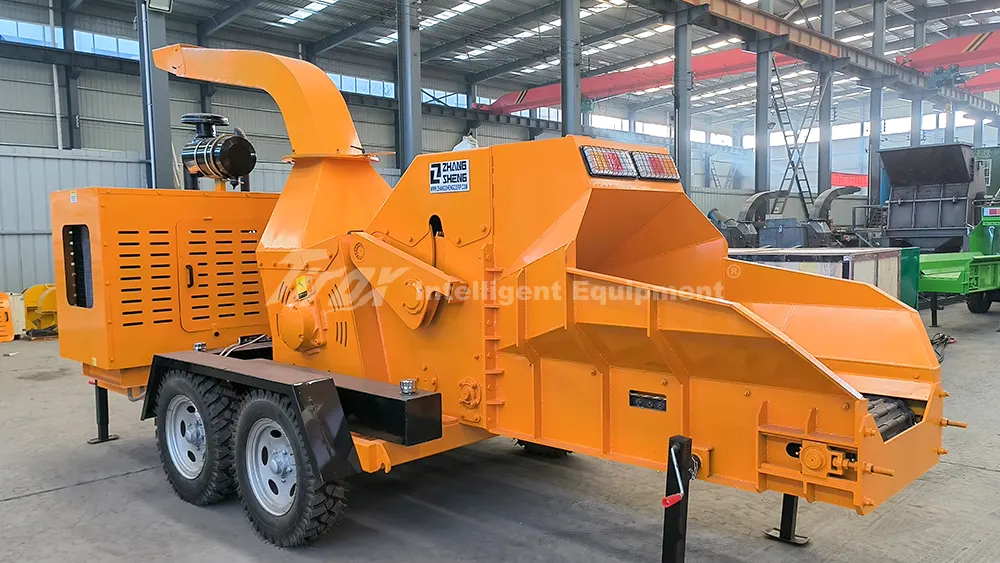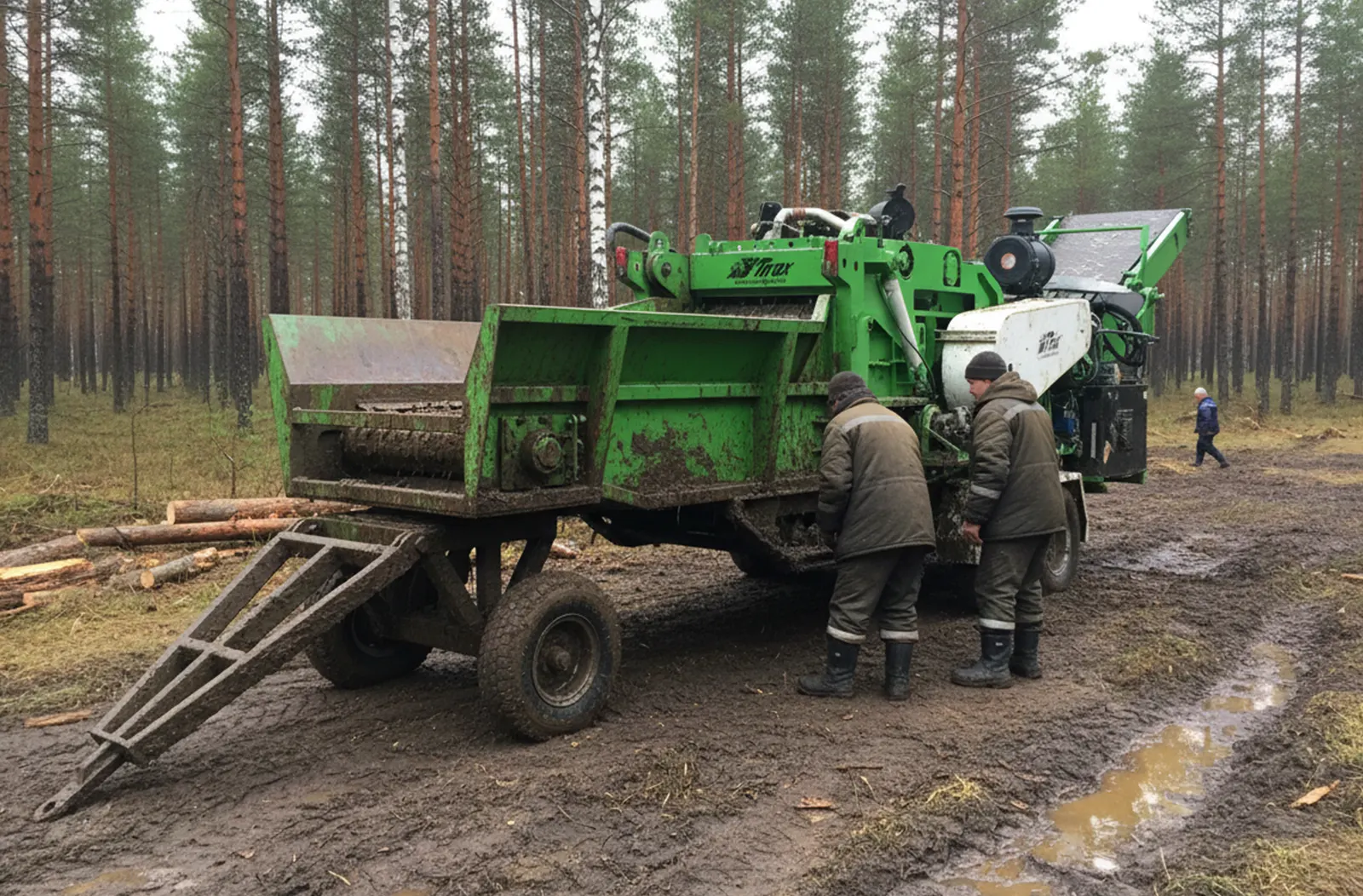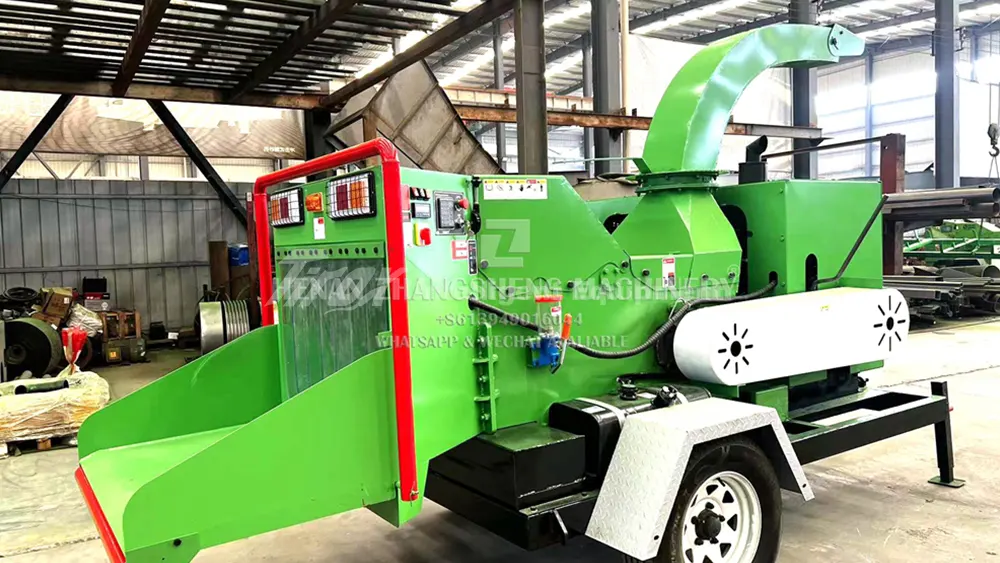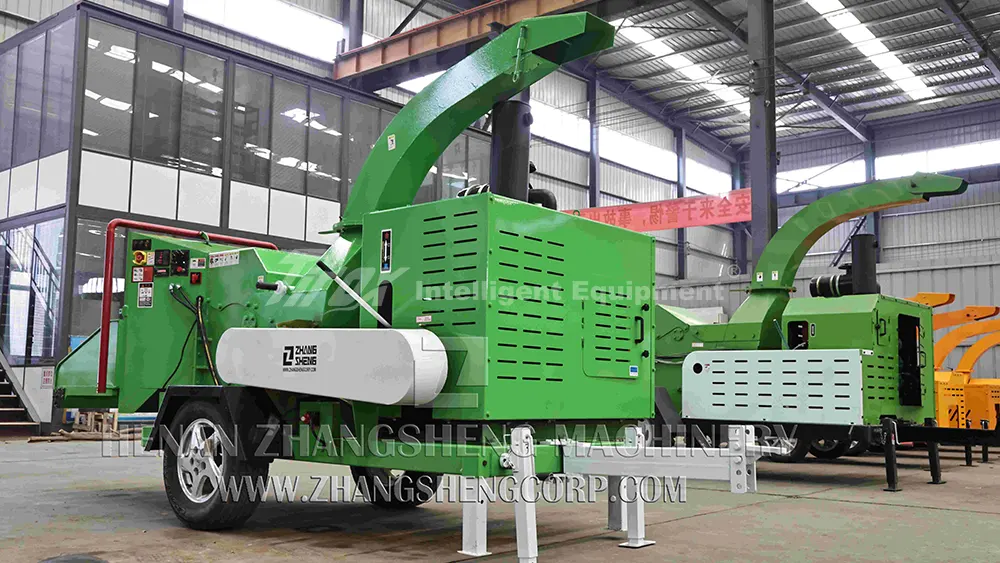Discover how industrial wood chippers revolutionize efficiency and sustainability in forestry and biomass operations.
Industrial wood chippers are crucial for converting wood waste into valuable chips, enhancing both forestry management and biomass energy production.
Understanding the pivotal role of these machines helps businesses optimize their operations and environmental impact.
Understanding Industrial Wood Chippers: Core Functionality?
What exactly makes industrial wood chippers so effective in large-scale operations?
These machines are designed to break down large volumes of wood into smaller, uniform pieces, using a robust feed system and powerful chipping mechanisms.
Industrial wood chippers differ from smaller models with enhanced durability and performance capabilities designed for continuous heavy-duty use. They often feature either drum or disc-based chipping mechanisms, each suited for different types of wood waste. Powered by strong engines, these chippers handle large-scale tasks more efficiently than residential models.

Types of Industrial Wood Chippers and Their Applications?
How do different types of industrial wood chippers cater to specific operational needs?
From drum to disc chippers, each type serves a unique purpose, whether it’s creating uniform wood chips for biomass fuel or handling long logs for land clearing.
Drum chippers are preferred for their high throughput and consistent chip size, making them ideal for biomass production. Disc chippers offer more precision, suitable for producing higher-quality chips for specialized pulp industries. Track-mounted and trailer-mounted models provide flexibility and mobility, crucial for operations in varied terrains and locations.
Maximizing Efficiency in Forestry Operations?
How can operators leverage industrial wood chippers to enhance forestry efficiency and sustainability?
Utilizing industrial wood chippers for on-site processing of forest residue can significantly reduce transportation costs and contribute to more sustainable forestry practices.
By chipping wood waste where it is harvested, businesses can lower fuel consumption and CO2 emissions associated with hauling unprocessed material. This practice not only cuts costs but also supports wildfire prevention by removing potential fuel sources from forest floors, thus contributing to healthier forest ecosystems.

Enhancing Biomass Energy Production?
Can industrial wood chippers become a cornerstone in boosting biomass energy production?
Yes, by producing high-quality wood chips, these chippers ensure efficient boiler operation in biomass power plants, supporting renewable energy production.
Optimizing the chip size and quality for combustion can significantly improve the efficiency and output of biomass boilers. This not only aids in meeting renewable energy targets but also plays a critical role in reducing carbon footprints, aligning with global efforts towards sustainable energy solutions.
Key Specifications and Performance Metrics?
What are the vital specs to consider when selecting an industrial wood chipper for maximum performance?
Key performance metrics such as horsepower, feed opening size, and throughput rates are essential in choosing the right wood chipper to meet your operational demands.
Higher horsepower engines enable handling denser materials and larger volumes, while larger feed openings accommodate bigger pieces of wood, reducing prep time. Throughput rates indicate how much material can be processed per hour, helping businesses gauge productivity rates and operational efficiency.
Conclusion
Industrial wood chippers are indispensable in modern forestry and biomass operations, boosting both efficiency and sustainability.






